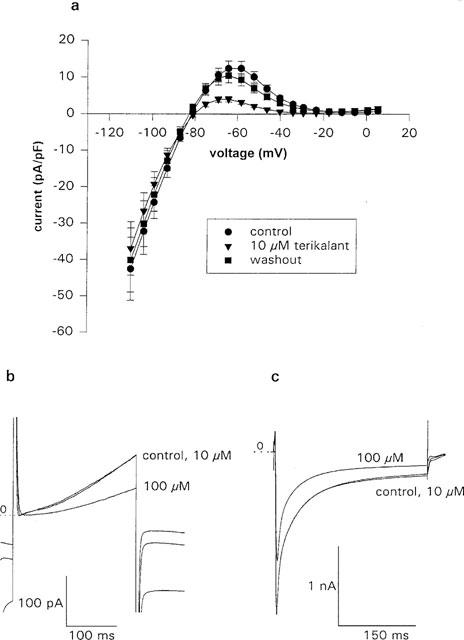Figure 8.

Terikalant at 10 μM inhibits IK1 without affecting IK and ICa. (a) IK1 was measured by applying a 500-ms ramp from 10 mV to −110 from a potential of −40 mV. Terikalant (10 μM) inhibited the outward current more than the inward current, although in both cases inhibition was significant (P<0.05, one-tailed paired t-test on the individual points). The current was maximally reduced by 89±4% at −30 mV. The effect of terikalant was reversible and following 10 min of washout of the drug, the current had almost returned to control levels (n=10 for control and 10 μM terikalant, and n=9 for washout). (b) The average, over 2 min, of 60 consecutive IKr current traces in control, and in the presence of 10 and 100 μM terikalant. At 10 μM, IKr was unaffected but at 100 μM the current was reduced by 51%. IKr was measured by stepping to −40 mV for 50 ms from a holding potential of −70 mV and then applying a 250-ms duration pulse to +20 mV. The zero IKr current level is shown by the dotted line, marked 0. The current at −40 mV, shown before and after the 250-ms pulse, is reduced by both 10 and 100 μM terikalant (lower most trace), due to inhibition of IK1. (c) The average over 2 min of 24 consecutive ICa current traces in control, and in the presence of 10 and 100 μM terikalant. ICa was also unaffected by 10 μM terikalant, although 100 μM inhibits the current by 26%. The dotted line, marked 0, is the zero current level. ICa was measured by applying a 300-ms duration pulse to +10 mV from a holding potential of −70 mV.
